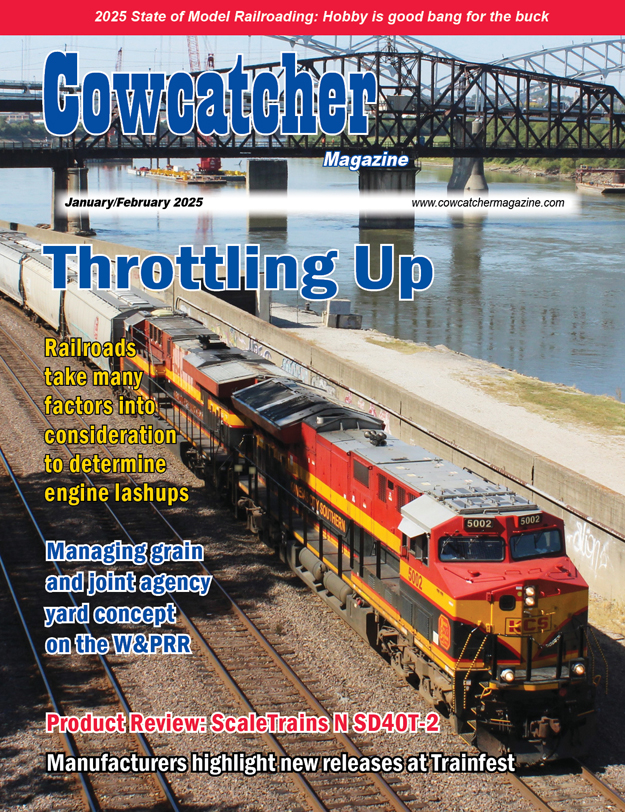Cowcatcher State of Model Railroading survey
Since 2019, Cowcatcher Magazine has taken the pulse of the model railroad industry with its State of Model Railroading survey presented in the January/February issue. The survey, which usually is released in November, allows our subscribers to give their thoughts and opinions on where the hobby has been and where it’s going.
Respondents answer 25-30 questions about their preferences regarding things like the industry’s overall model quality, costs, ease of use, availability and others. The Cowcatcher State of Model Railroading survey sheds insight into how much time respondents are spending on the hobby as well as their spending, social interactions and their thoughts about model railroading’s future. And, respondents can share in their own words whatever is on their minds.
The survey is open only by email to print edition subscribers and select recipients.
The Cowcatcher’s 2025 State of Model Railroading survey is closed! See the results in the January/February 2025 issue.
Learn more.
An operating session on the Splitrock Mining Co. Railroad is pretty straightforward. A three-person crew works the freelance HO-scale railroad with the sole purpose of transporting iron ore mined in Northern Minnesota to a freighter on Lake Superior. Instructions for the operators can be communicated in a few words before the shift begins. Pull all loads at the mine. Take them to the boat. Take all empties from the boat back to the mines. Rinse and repeat. There are no car cards or manifests. Switching is done by colors, and, yes, there is a rhyme and reason on this Alco-driven layout based on railroading on the Iron Range in Minnesota.
A new generation of freelance railroads is taking model railroading by storm, gaining prominence through online videos and social media. The ages-old modeling technique is attracting young modelers and unlocking creative license in veteran hobbyists.
In Southern Wyoming, OmniTRAX is handling switching for two mines in a region known for its prolific coal mining operations. The mines deliver about 17 million tons of trona, a sodium carbonate compound that is processed into soda ash or bicarbonate of soda, and OmniTRAX is increasing safety and managing efficiencies in moving inbound and outbound cars.
G&G Model Shop in Southwest Houston credits flexibility and personalized service for its 80 years serving the model railroad community. Rapido Trains delivers an N-scale replica of the Santa Fe Railway’s storied SFRD RR-56 refrigerator car, reviewed in this issue. Also, the romance of the circus and railroads united in the circus train, which endured as the greatest shows on earth’s sideshow. And more!

